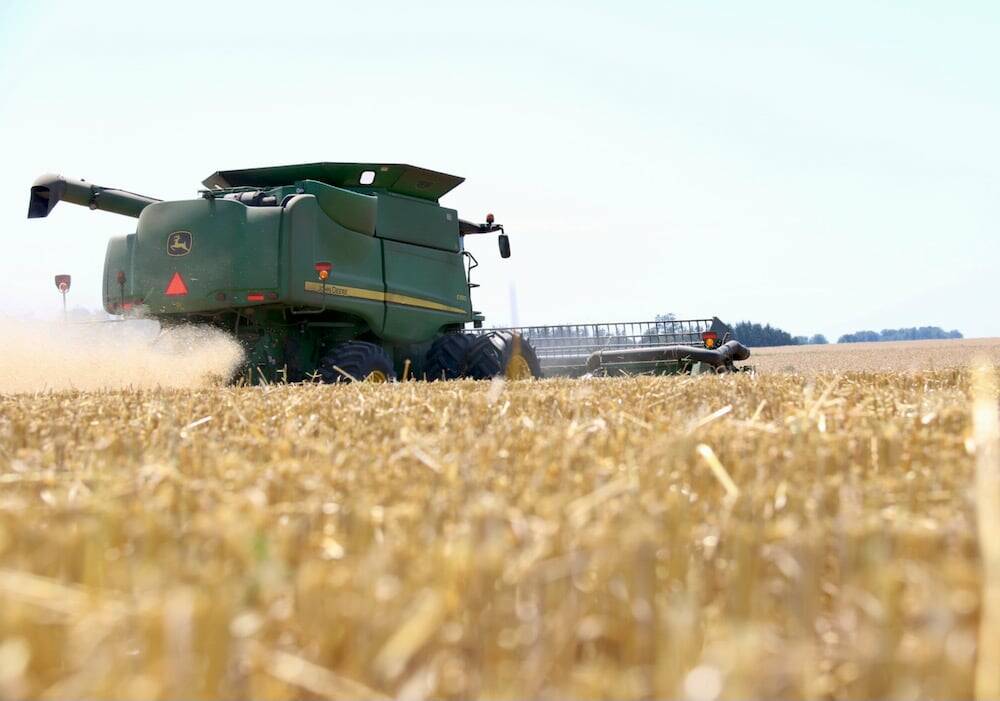Repeated delays bring average winter wheat crop province-wide

Ontario’s winter wheat crop yield was average despite production delays from winter until harvest.
Read Also


Funding alignment needed to get the right livestock tech to farmers
Addressing the gap between research dollars and the needs of the agriculture industry is critical to encourage technology development of value to farmers.
The now-harvested crop had a shaky start thanks to delayed soybean maturity and harvest in autumn 2023, says Joanna Follings, cereals specialist with the Ontario Ministry of Agriculture, Food and Agribusiness.
In some places, winter wheat was not planted until well into October or even November in the deep southwest. Concerns about winterkill were high from the start, but a generally mild winter negated many fears.
“In some areas we broke dormancy 30 days ahead of last year,” says Follings. “That was a challenge in itself. We broke so early. We would expect winter to continue, but that didn’t happen so the weeds began to grow … but we were holding off on nitrogen applications because of concern of loss.”
Where early nitrogen was successfully applied, wheat stands were solid and quick to green. Then more rain arrived, delaying herbicide applications. Bluegrass and chickweed, in particular, were able to gain ground.
“Keep that top of mind. If you did have or have dealt with bluegrass in the past, you need to be on top of your herbicide program,” Follings says.
Good disease control
Stripe rust proved to be an issue, leading many growers to apply fungicides between the T2 and T3 growth stages. Further stripe rust controls were applied after T3, along with fusarium treatment.
Regarding the latter, Follings says Ontario growers achieved good control, with levels generally under two parts per million province-wide.
“There was also a bit of powdery mildew and leaf rust as the season progressed, which was unusual.”
Marty Vermey, senior agronomist with Grain Farmers of Ontario, agrees that Ontario growers effectively mitigated disease, despite often rainy conditions through spring and early summer.
“Back during heading and pollination, and during grain fill, we were experiencing what seemed to be ideal conditions for fusarium head blight to be an issue. There were some reports of fusarium being seen in the field during grain fill, but if you look hard enough you can find it every year somewhere,” says Vermey.
”What I saw this year was individual florets that were infected, and not half or whole heads like years ago.
“I would give credit to farmers’ management of their wheat crop as in their selection of more (fusarium) tolerant wheat varieties, and the use of fungicides at T3 … That said, we also need to give credit to the agriculture industry for paying attention to this issue and developing and selecting tolerant lines over all these years. Also, the development and continual improvement in fungicide.”
Follings says some areas experienced very high pressure from cereal leaf beetle, including areas where the pest had not previously been a problem. It was significant enough to warrant pesticide application, despite healthy populations of beneficial insects.
Feeling the heat
High temperatures during grain fill, which in some areas of the southwest reached 40 C, were also a drag on yield. Vermey noticed bottom kernels did not fill and there wwere smaller kernels throughout the heads.
“That hot week of June 18th, as wheat was in the last stages of grain fill, put an early close to the crop, hastened maturity on and cost us some bushels. We hope the YEN (Yield Enhancement Network) this year may shed some light on kernel number and size.”
Follings says the same. And while harvest did come early for some, others were delayed by yet more rain. As of mid-August, she estimated harvest was just wrapping up in Dundalk and other parts of Eastern Ontario.
The added moisture also contributed to low falling numbers.
“As we get into harvest, it’s so critical to get wheat off early … to ensure you can get it off before those falling issues begin to creep in,” she says.
Source: Farmtario.com

